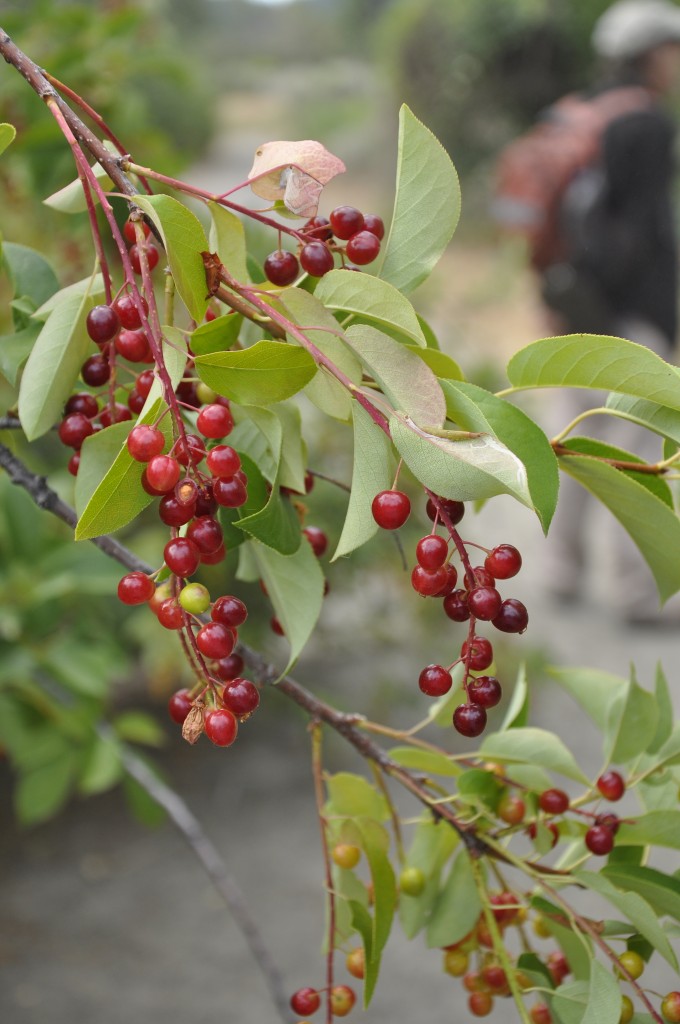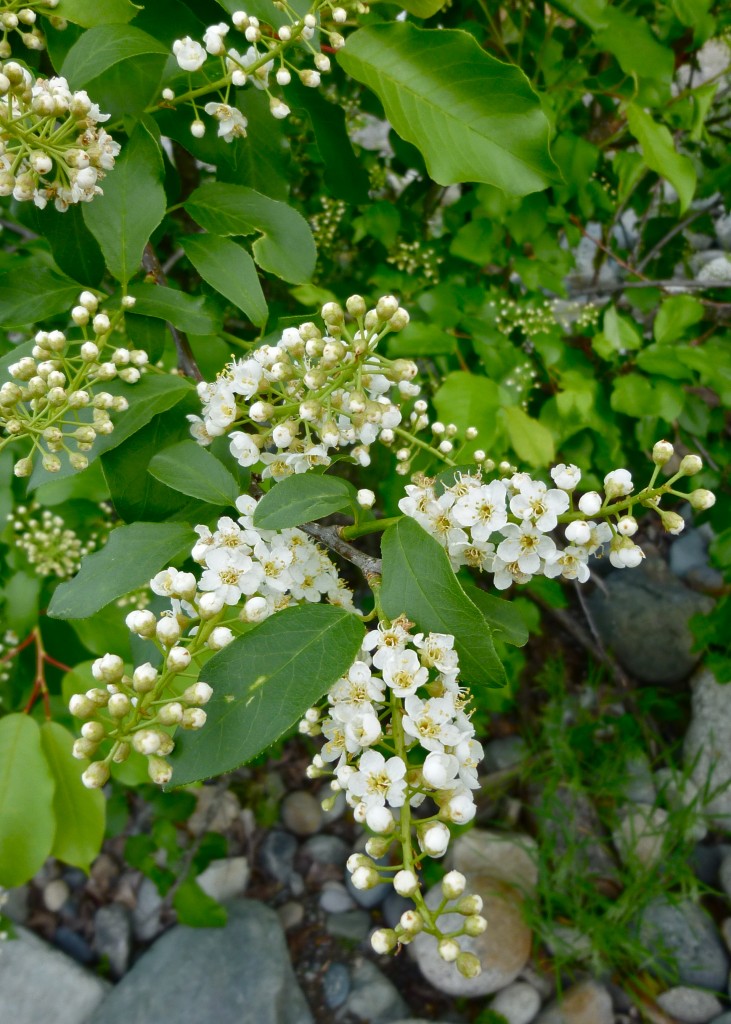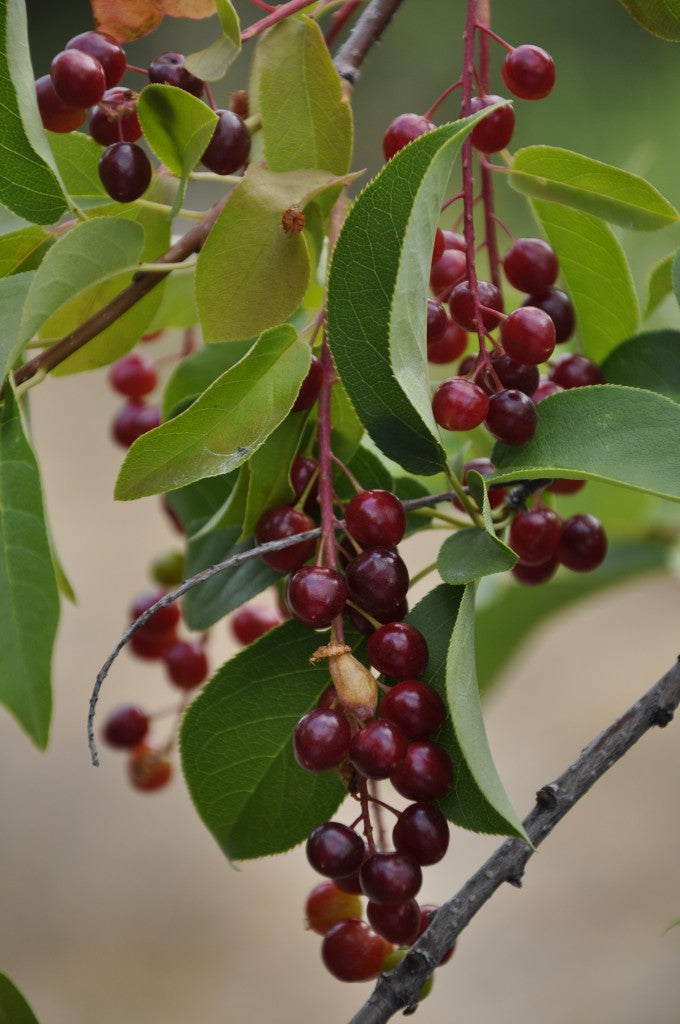


Splitrock Environmental
Choke cherry (zelkwú7)
$7.50
Tall shrub or small tree with many stems and thin, toothed leaves with beautiful dark red fall colours. Clusters of small purple to black cherries develop in late summer.
| Latin Name | Prunus virginiana | |
| Type | Shrub | |
| Height and Spread | 1 – 4 m (3 – 13 feet) | 1 – 3 m (3 – 10 feet) |
| Bloom Colour | Creamy white bottle-brush clusters | |
| Bloom Months | May and June | |
| Foliage Colour | Green | |
| Seed Months | Late July to August | |
| Light and Water | Full sun or partial shade | Plant in a damp area or water regularly. It will tolerate some dry periods. |
| Ethnobotany Information | Although the berries are astringent, they are popular eaten fresh, dried, and as a juice. St’at’imc elders distinguish at least two varieties: one has translucent red fruits that are sweet and juicy, and the other has dark purple-black fruits that, unless picked when completely ripe, are astringent, giving a feeling of having swallowed a mouthful of cotton, hence the name “choke” cherry. | |
| Wildlife Uses | Choke cherry is an excellent bird attractant. It’s a host place for two-tailed swallowtail and coral hairstreak butterflies. Bears enjoy the berries in late July. | |
| Garden Uses | Beautiful when used around riparian areas or landscaped waterways. Useful for smaller properties. Attracts birds. | |
| Facts | When you see a choke cherry you are likely to see white clematis and poison ivy growing close by. The bruised bark gives off a pungent smell and has a bitter taste. | |
| Propagation Techniques | ||
Your cart is empty
Continue shopping

